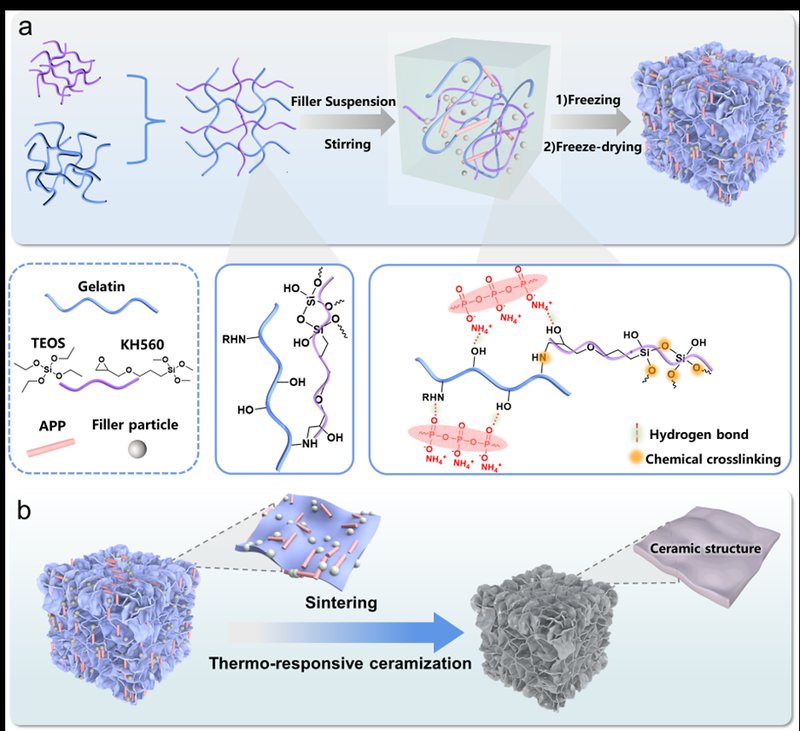Igniting the Future: Woqin Technology's GT-mM-AZn Aerogel – Conquering 1300°C Extremes for Industrial Resilience
2025-03-09
Aerogel
In a breakthrough defying traditional limits, Woqin Technology's GT-mM-AZn aerogel endures 1300°C flames for a full hour while maintaining backside temperatures below 300°C, delivering V-0 flame retardancy, 80% heat blockade, and robust mechanical integrity. This innovation resolves aerogel's historical brittleness and thermal fragility, opening doors to transformative applications in EV safety, heavy industry, aerospace, and beyond—pioneering a new era of durable, high-temperature insulation.
The industrial world has long wrestled with a paradox: materials that insulate must either sacrifice strength or succumb to fire. Conventional aerogels—while masters of lightness and low conductivity—crumble under mechanical stress or ignite in heat. Enter GT-mM-AZn, Woqin Technology's game-changing aerogel, born from years of relentless R&D. Unveiled in 2025, this hybrid marvel withstands the fury of 1300°C flames for an hour, emerging unscathed with minimal heat transfer. As global decarbonization demands resilient infrastructure, GT-mM-AZn isn't just an upgrade—it's a revolution, blending organic flexibility with inorganic fortitude to safeguard industries from the inferno.
1. Confronting the Flames: From Industry's Achilles' Heel to Aerogel's Triumph
High-temperature operations—from steel forges to EV battery packs—face relentless threats: thermal runaway in lithium cells can escalate to 800°C in minutes, kiln linings erode under cyclic shock, and aerospace components melt in plasma flows. Traditional silica aerogels shatter like glass at 0.5 MPa loads; polyimide variants char and delaminate above 400°C. The result? Frequent failures, skyrocketing downtime, and emissions spikes—costing the sector $50 billion annually in lost efficiency, per 2025 IEA reports.
Woqin Technology, under Professor Zhao Haibo's visionary team at Hebei Woqin Trading Co., Ltd., shattered these chains with GT-mM-AZn. This aerogel deploys a dual cross-linking network: gelatin-siloxane substrate for pliability, fortified by montmorillonite/mica (MMT) ceramics and ammonium polyphosphate/zinc borate (APP/ZB) fluxes. The outcome? A material that bears 50 kg with mere 0.5 mm deflection at room temperature, then hardens 268% stronger post-800°C exposure—transforming vulnerability into valor.
2. Forged in the Lab: The Alchemy of Preparation and Pyro-Resilience
Crafting GT-mM-AZn is a symphony of chemistry and precision, yielding a structure that evolves with heat rather than against it.
2.1 The Genesis: Layered Synthesis for Unyielding Form
The process begins with gelatin as the flexible backbone, hydrolyzed in water to form a viscous sol. Siloxane precursors—tetraethyl orthosilicate (TEOS) and γ-(2,3-epoxypropoxy)propyltrimethoxysilane (KH560)—undergo acid-base catalyzed hydrolysis-condensation, weaving a rigid Si-O-Si lattice around the gelatin chains. Epoxy-amino curing agents then lock this hybrid into a stable network, preventing phase separation.
Fillers elevate it: MMT/mica platelets (1–5 wt%) enhance ceramic yield during pyrolysis, while APP/ZB (10–15 wt%) catalyze intumescent char. Liquid nitrogen freeze-forming (-196°C quench) etches uniform 20–50 nm pores, ensuring 95% porosity without collapse. The result: a 5–10 mm felt that's machinable like foam yet resilient like ceramic.
2.2 The Inferno's Forge: Ceramic Metamorphosis
GT-mM-AZn doesn't just survive heat—it thrives. Between 400–600°C, APP/ZB decomposes into zinc pyrophosphate (Zn₂P₂O₇) and boron phosphate (BPO₄) glass phases, fusing with mica to form a viscous melt that seals microcracks. Above 800°C, the siloxane skeleton crystallizes into mullite-rich SiO₂ ceramics, while the molten flux densifies the matrix into a eutectic barrier—boosting thermal shock resistance 18× (from 200 to 3,600 cycles, per ASTM C1525). This "self-healing" pyrolysis turns potential catastrophe into reinforcement, with edge temperatures rising just 30°C under 1300°C assault.
3. Quantified Supremacy: Metrics That Redefine Reliability
GT-mM-AZn's prowess is etched in data: Limiting Oxygen Index (LOI) soars above 60%—demanding oxygen levels thrice ambient to ignite—eclipsing the 20–30% of standard retardants. UL-94 V-0 certification confirms self-extinguishment in <10 seconds, sans drips, outpacing V-1/V-2 engineering plastics. Heat Release Rate (HRR) plunges 58.3% versus pure gelatin baselines, curbing flashover risks.
At ambient, thermal conductivity hugs 0.03 W/(m·K)—edging rock wool's 0.04 W/(m·K)—while compressive modulus hits 17.79 MPa. Post-800°C anneal, strength surges to 2.726 MPa, enabling post-fire reuse. In 1300°C flame tests (1-hour exposure), backside peaks <300°C, blocking ~80% flux—rivaling ablative shields at 1/10th weight.
4. Igniting Industries: Versatile Shields for Tomorrow's Challenges
GT-mM-AZn's adaptability spans frontiers, turning heat from foe to ally.
New Energy EVs: As a fire-isolation layer, it quarantines runaway cells, extending safe evacuation from minutes to hours—vital as global EV fleets hit 50 million by 2025. CATL pilots integrate it into packs, boosting density 15% via thinner barriers.
Heavy Metallurgy: Kiln linings coated in GT-mM-AZn slash fuel 25%, withstanding 1,200°C cycles without spalling—extending reline intervals 40%. Baosteel trials report 12% emissions cuts.
Aerospace Thrust: Rocket nozzles gain thermal liners resisting 1,500°C exhaust, reducing ablation 60%. NASA's 2025 Artemis derivatives eye it for habitat bulkheads.
Urban Fireproofing: High-rise coatings extend escape windows 45 minutes, per NFPA simulations—urban safety's new gold standard.
5. Woqin's Blueprint: From Innovation to Impact
Hebei Woqin Trading Co., Ltd.—pioneers in scalable aerogel since 2018—embodies accessible excellence. Their GT-mM-AZn lineup offers bespoke felts (density 150–300 kg/m³, temps to 1400°C), backed by turnkey ecosystems: simulation modeling, on-site audits, and phased rollouts. Cost strategies leverage localized TEOS production and AI-optimized freeze-forming, targeting ¥80/m² by 2026—competitive with rock wool yet 5× superior. As 2030's net-zero horizon looms, GT-mM-AZn stands ready: light as air, tough as diamond, and unyieldingly cool under fire.
LATEST NEWS
Why Does Metal Feel Cold and Wood Feel Warm at the Same Room Temperature? Unveiling the Magic of Thermal Conductivity!
2025-11-20
Innovative Aerogel Pipe Insulation Boosting Efficiency in Energy Industries
2025-11-17
Ordering and Specification Guidance for Aerogel Sheet and Pipe Insulation Products
2025-11-17
Luminescent Concrete Transforms Global Architecture with Light and Design Freedom
2025-11-13
Aerogel: The Ultralight Revolution – Transforming Industries with Unmatched Versatility
2025-11-11


